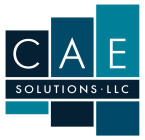I saw a quote recently to the effect of, “Many people wish they’d started sooner. No one wishes they’d started later.” It’s a great point. Hindsight is often 20/20, but what if you know you need to start on something, but you don’t know how or where to start?
Purpose
Call it Mission, purpose, your “why”, whatever; often when we don’t know how to get started on something, we need to re-visit our reason for doing it. Questions to ask: Why am I doing this? What do I want to be or hope will be true as a result of having done this? We don’t really live at the purpose level day-to-day, but we need to be able to zoom out to that level when we need re-orientating or motivation.
Vision
Closely related to purpose is to give yourself a vision. Create a clear vision of wild success in whatever you’re trying to do. Your mind will figure out how to fill in the details to get you there. That’s one of the cool things about how the brain works when used correctly. This is the time to give yourself permission to dream. I’ve mentioned multiple times on this blog that nothing motivates action as well as a clear vision of wild success. Questions to ask: What would wild success look like if I started and completed this? What would be true if this were successful? Be as specific and descriptive as possible in that vision because the brain will begin to respond in almost uncontrollable ways.
Goals
We must set benchmarks, goals, desired outcomes, stakes in the ground, or whatever you want to call them to help us gauge progress. The purpose and vision make it easy to do this. Questions to ask: What needs to be completed to achieve the purpose and vision? What are the key benchmarks on the way to success? It’s worth repeating: clear purpose and vision make the goals obvious.
Actions
When you get this far, it’s usually easy to sequence the actions you need to take to hit the outcome benchmarks, make the vision a reality, and achieve your purpose. Questions to ask: What needs to be done to reach the desired outcomes? What needs to be done to reach our first benchmark? Is there a sequence of activities and what is it? What’s the next physical, visible thing I can do to move this forward? Clear, physical, visible actions make it easy for even the most unmotivated brain to say, “Oh, I can do that!”
David Allen, the author of Getting Things Done, discusses a similar version of this called the Natural Planning Model. Natural because it’s the planning process the human brain uses to achieve a goal. The cool thing about this approach is that you can start anywhere. Clear on the next action, but still not motivated? Go up to purpose and vision. Purpose and vision clear, but not making any progress? Get concrete on the next physical, visible thing to do. Pretty cool!
Now quit reading and go start that thing you need to do!
Want these blog posts delivered straight to your inbox each week? Click here to subscribe.
Follow us on social media at the links below.




